
views
Painting the Ceiling With a Roller and Brush
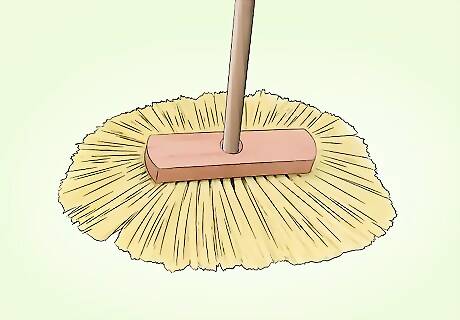
Choose a stomp brush. A stomp brush, also called a slap brush, often comes in a variety of different textures. Stomp brushes are brushes with very long bristles and can be used to make a variety of textures on your wall. Choose a brush for a type of texture that you want. If you want thicker pieces hanging from the ceiling, pick a stomp brush with thicker bristles. You can purchase slap brushes at most hardware stores.
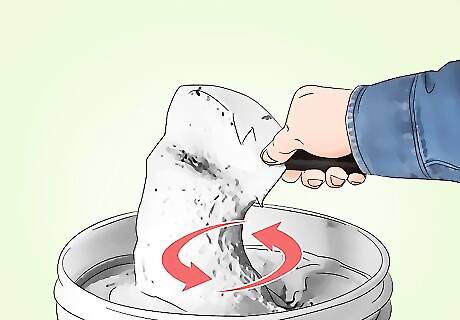
Mix your drywall texture together. Read the instructions for your wall texture mix and combine the appropriate amount of water with the mix in a giant mixing bucket. Continue to mix the texture mix with water until it reaches a pasty consistency like pancake mix. One of the most popular brands of texture mix is Sheetrock texture paint. You can use a 5-gallon (3.7 liters) bucket for this.
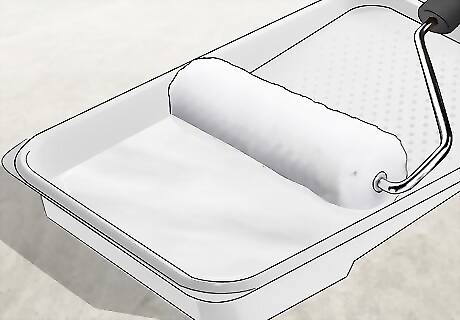
Dip your paint roller into the compound and get it fully saturated. Roll your paint roller into the drywall mixture that you just created and get it fully saturated. Knock the excess dripping paint back into your bucket so that the paint does not drip when you apply it to the ceiling.
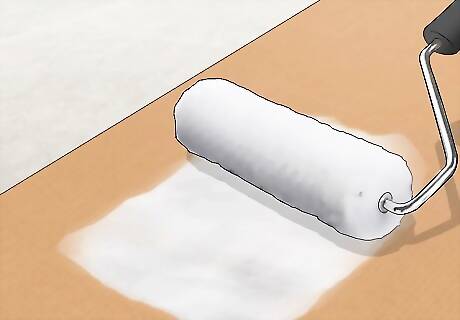
Test the ceiling texture mix on a piece of cardboard. Before you commit your texture to the ceiling, you should practice on a piece of cardboard first. Practice painting your textured paint onto the surface of some cardboard. If the mixture is too thick or not the texture that you want, add more water to your drywall mixture.

Roll a layer of paint onto the ceiling. Use a paint roller to apply a 1/8″ thick layer of the compound to the wall. Work in 1/6ths of your ceiling so that the mixture doesn't dry before you finish texturing your ceiling.
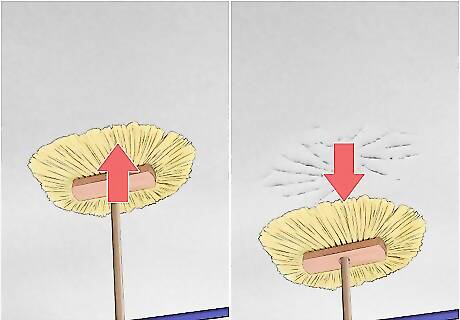
Press the brush against the wall to create the texture. Hold your slap brush perpendicular to the wall and push it into your layer of paint. Lift the brush back and you should have a nice texture on your wall. Experiment with different slap brushes and different amounts of paint to achieve different textures.
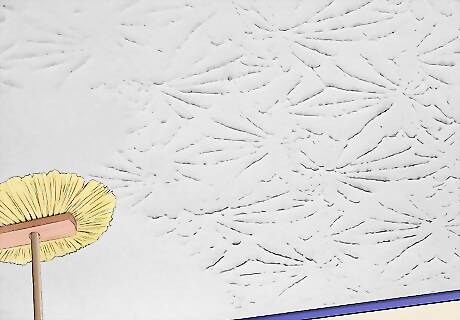
Finish painting the rest of your ceiling. Using the roller and brush method, move to the different parts of your ceiling until it's totally finished. Remember to mix your drywall mixture as you paint, so it doesn't harden in your bucket.
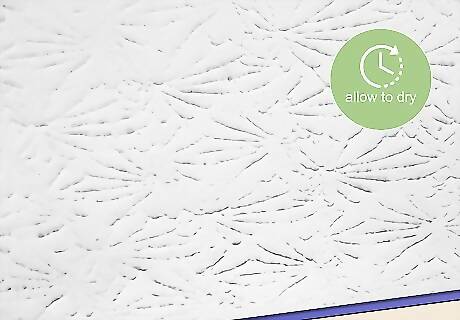
Let the paint dry. Once your entire ceiling has been textured, allow it to dry for at least 48 hours before removing your painter's tape and wiping the ceiling down with a damp rag.
Painting with a Paintgun
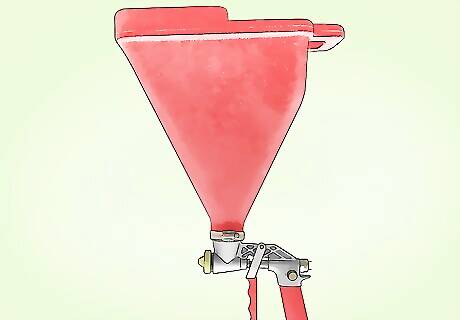
Rent or purchase a textured paint gun. You can rent or buy a pressurized paint gun and textured nozzle at most hardware stores. A textured hopper will look like a paint gun with a large funnel on the end of it. If you can't find textured paint guns, ask a sales associate at the hardware store or search online for a "textured spray paint gun." Sprayers typically cost $225 to $400. Renting a paint gun and textured hopper will cost between $40 - $100 a day.
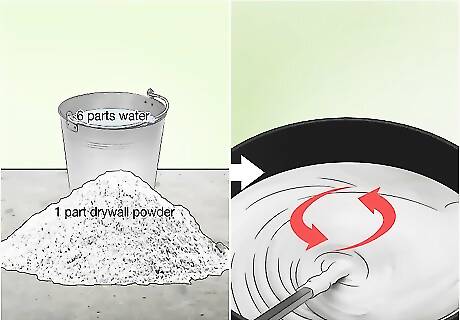
Mix your drywall powder with water. Use a five-gallon bucket and mix your drywall compound with water. For the traditional drywall compound, use one part powder to six parts water and mix it together until it reaches a pancake batter-like consistency. If your drywall mixture is too thick, add more water until it loosens up. If you are having trouble mixing your compound by hand, use a drill and ribbon mixer.
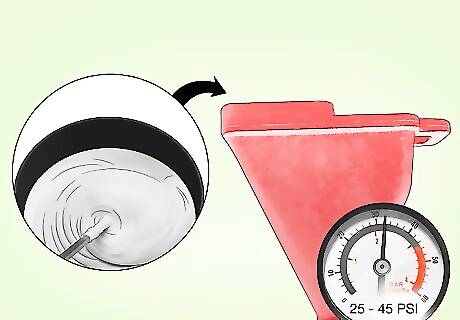
Load the hopper and set the gun's PSI. Load the hopper on the gun with the drywall mixture that you just created. Attach the gun to the air compressor and adjust the setting to 25 to 45 PSI. Once the gun is correctly hooked up and loaded, you can start painting.

Test the gun on a piece of cardboard. Before trying to apply the texture to your ceiling, use a piece of cardboard so that you can get a feel for your paint spray gun. If your texture is too thin, add more of the drywall powder. If the paint is coming out too thick, add more water to your mixture.
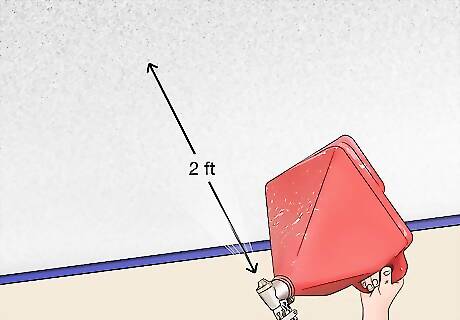
Hold the hopper 2 feet away from the ceiling and pull the trigger. Move in slow deliberate sections of 6x6 feet (1.82 x 1.82 meters). If a part of your ceiling doesn't have enough texture, hold the gun and paint that part of the ceiling longer.

Wait 30 minutes and push the paint with a knock-down blade. Allow the paint to harden a little, but not enough to be completely dry. Once it's stiffened up, use a knock-down blade to press down the textured ceiling. A knock-down blade is a handheld tool with a flat edge that you can use to push down overly textured stipple. Using a knock-down blade over the entirety of your ceiling will give it a unified texture.
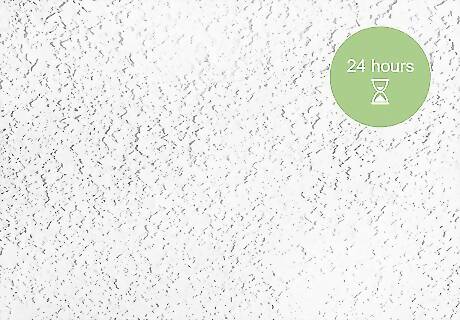
Allow your ceiling to dry for 24 hours. After you've painted your ceiling, you'll need to wait a full day before it's all dried. Once it's dried, you can wash your ceiling as you normally would.
Preparing Before You Paint
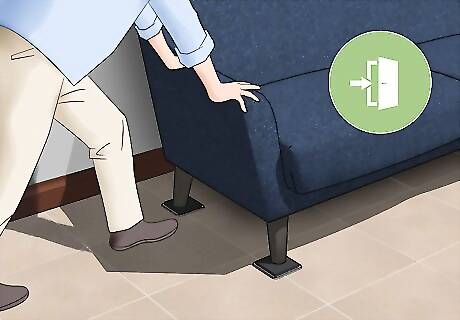
Empty the room of furniture. As you stipple the ceiling paint will drip and land on whatever is beneath it. To preserve the look of your furniture, make sure to move it out of the room. If you have oriental rugs or carpets, you can roll those up and put them out of the room as well. Dried paint is easier to clean off hard flooring than carpet or upholstery.
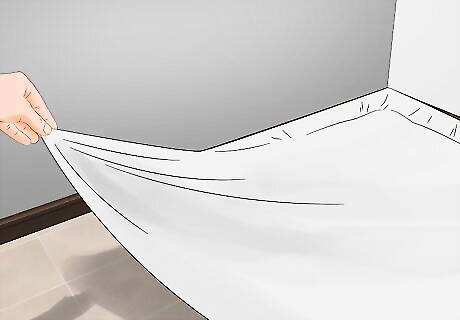
Lay dropcloths on the floor and any furniture you didn't move. If you have pieces of furniture that are too big to be moved, you can lay drop cloths or tarps over them. Cover up the floor to prevent dripping paint from getting on it.

Remove fixtures from your ceiling. Fixtures will cover up portions of your ceiling and make it impossible to stipple it consistently throughout. Find your circuit breaker box and turn off the power for the fuse that you're working on. Unscrew ceiling lights, fans, and chandeliers from your ceiling with a Phillips-head screwdriver or screwdriver that fits the screws in your lighting fixtures. Double-check that the flow of electricity to your light is off by flipping the light switch on and off. If you're uncertain how to disconnect electrical fixtures properly, hire an electrician. For fixtures that you can't remove, apply painters tape around the edge of them so that they don't get paint on them.
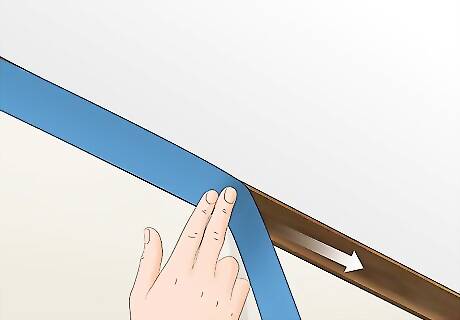
Apply painter's tape around the perimeter of your ceiling. To prevent your paint from dripping onto your walls, you'll need to apply painter's tape to the edges of where your walls meet your ceiling. Roll out long pieces of tape and apply it to the top of your walls and around the perimeter of the ceiling you intend on painting. Applying 5-8 inches (12.7-20.32 cm) of painters tape will ensure that the ceiling paint will not drip onto your walls. If you paint outside of the lines, your paint will end up on the painter's tape and not the walls.
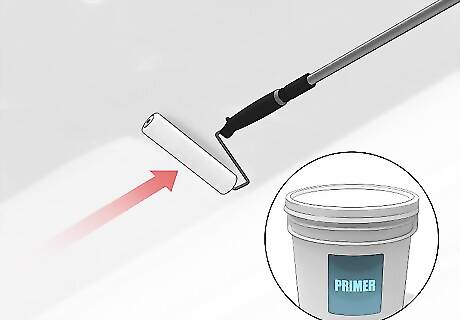
Prime the ceiling. Purchase a white or off-white oil based or water based primer at a hardware store or online before using texture on your ceiling. Use a brush and dip it in the primer before applying it to your ceiling. Allow the primer to dry overnight before continuing with the rest of your project. Applying primer will allow the heavy textured paint to adhere to your ceiling. When using an oil-based primer, make sure to open the windows and to have proper air ventilation.



















Comments
0 comment